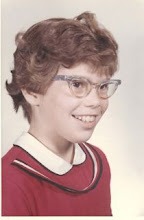The former question, however, is beyond my power to answer -- can any good bookworm worth her ink single out one title? While I truly don't have a "favorite book I've ever read," there are books that I cherish. In this category, I place Arnold Lobel's Ming Lo Moves the Mountain

because it gave me the idea that I, too, could write books for children. I also adored his Uncle Elephant. The picture book I read with my kids more than any other book, however, was How Tom Beat Captain Najork and His Hired Sportsmen, written by Russell Hoban and illustrated by Quentin Blake. (I have since learned that Karen Cushman is also a Captain Najork fan!). One reason the kids and I loved Captain Najork so much was that the whole reason Tom succeeds in beating the Hired Sportsmen at their games is that he has spent so much time "fooling around."

What a great lesson: get good at your "play" and it will take you places. That got me to thinking about ways to play at our work. From Justina Chen Headley, I've learned about vision boarding and Wordles (not that I've played around with either myself); from the amazing poet, Julie Larios, I've been learning about drifting and noticing and being a flaneur; from Mary Nethery, I've learned about playing around on great rolls of paper and last, but not least, Jolie Stekly has posted weekly prompts to get me playing with character creation.
So I have two questions for you:
1) Is there a book you particularly cherish? If so, what it is?
2) What is your favorite way to play with words?
Now, if you'll excuse me, I have some very important fooling around to do.


The book that changed my writing life was Missing May by Cynthia Rylant. That was the book that gave me my light bulb moment. I instantly recognized her voice of authenticity that comes from writing a story set in her heart's home - that strong sense of place and those people who live there - came through loud and clear for me. After reading Missing May, I wrote Me and Rupert Goody and felt that I had found my own voice. I sent Rylant a copy of it and she wrote me back (and even signed it "Cyndi"). That letter is in my scrapbook (along with another note from another author I adore....remember?)
ReplyDeleteAs for playing with words, my favorite thing to do is fiddle around with rhythm - the balance of short and long sentences, the flow of phrases, the cadence of sentences, the repetition of words for the sake of "sound", etc.
Barbara,
ReplyDeleteThank you for sharing this lovely moment -- I read Missing May, too, early in my career and loved it. So glad it was the spark that helped you find your own unique, wonderful voice.
I also love Missing May. And Sarah, Plain and Tall, the only book about writing anyone needs. And Rosemary Sutcliff's story of Britain after the Romans, Dawn Wind. And Chance Child by Jill Paton Walsh. And..........Like most authors, I could go on until Labor Day and never get them all listed.
ReplyDeletePhyllis Whitney's young adult mysteries (way back in the sixties & seventies) told me I wanted to be a writer. The Secret Garden taught me about magic. Jo's boys taught me to keep reading in a series--Beth can only die once. Anne of Green Gables showed me that a book character can be a kindred spirit. Fun post! :)
ReplyDeleteKirby, we've got to make vision boards together. It would be so much fun.
ReplyDeletexoxJustina